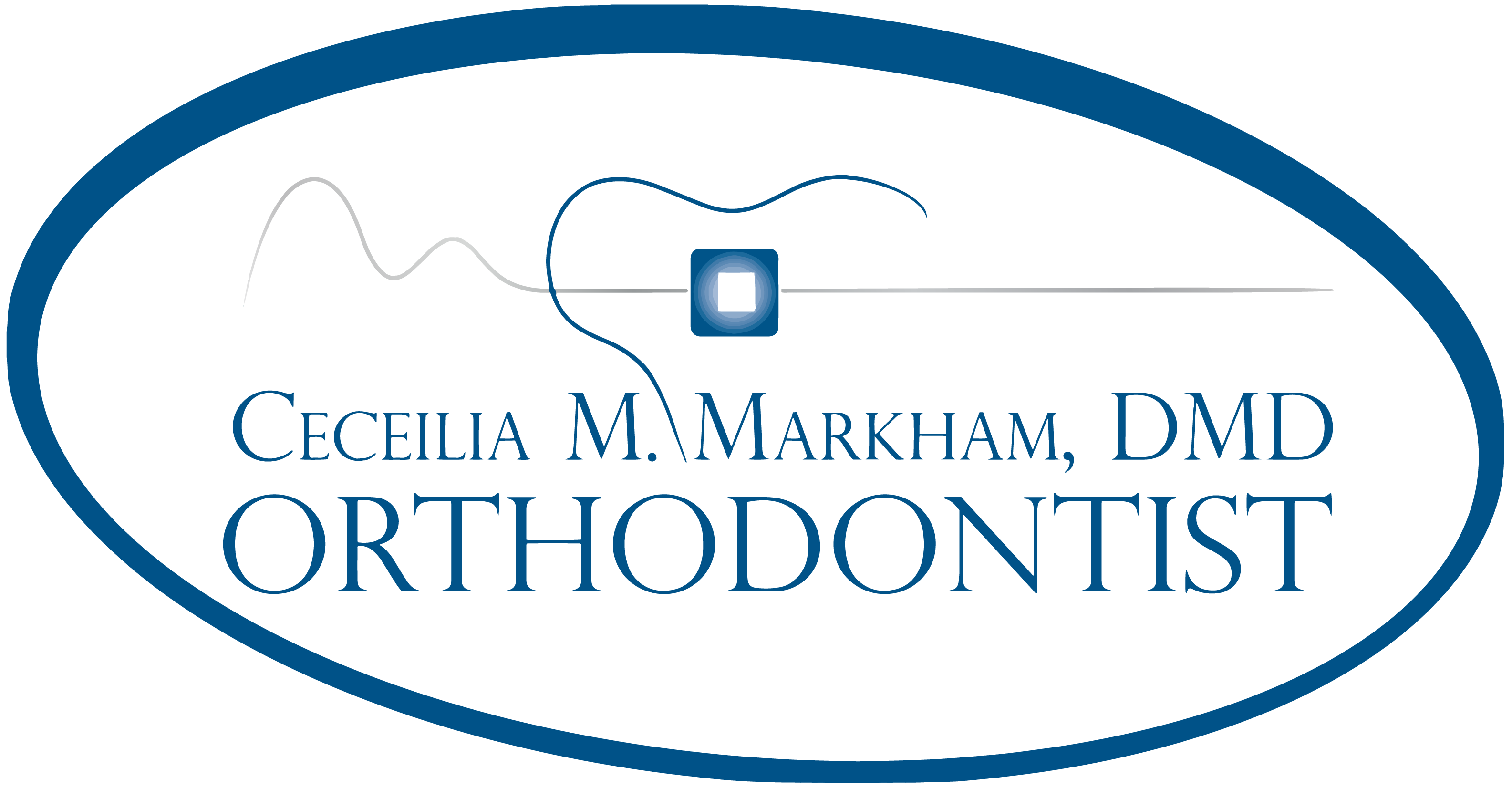When it comes to orthodontic care, the timing of your first visit can play a significant role in the effectiveness of treatment. Whether you're considering orthodontics for your child, yourself, or a loved one, knowing the right time to seek an orthodontist's advice is crucial. Early intervention can prevent more serious problems in the future, while waiting too long might mean more complex and costly treatments. Understanding the best age to visit an orthodontist can help you make an informed decision for a healthier smile.
At Ceceilia M. Markham, DMD in Warrington, PA, we specialize in providing individualized orthodontic care for patients of all ages. From early evaluations for children to advanced treatments for adults, we ensure that everyone receives the most effective treatment for their unique needs. In this article, we will explore when the best time is to see an orthodontist, the benefits of early evaluation, and how timing affects the success of orthodontic treatment.

Why Timing Matters in Orthodontics
The primary goal of orthodontics is to improve the alignment of the teeth and jaws, which can prevent other dental issues, such as bite problems, crowding, or spacing. The timing of orthodontic intervention significantly influences the treatment's outcome. The best age to visit an orthodontist depends on the specific needs of the patient and their stage of dental and facial development.
Early intervention can correct problems before they become more complicated, while waiting too long may lead to a longer, more intensive treatment process. In this article, we'll break down the ideal ages to visit an orthodontist, the reasons for early or late intervention, and how orthodontics benefits individuals at any stage of life.
The Best Age to Visit an Orthodontist for Children
The American Association of Orthodontists (AAO) recommends that children have their first orthodontic evaluation by age 7. This may seem early, but it is actually the optimal time to identify potential problems and take action before they become more serious. At this age, a child’s teeth and jaw are still developing, which allows for the possibility of early intervention. The earlier an orthodontist can identify alignment problems, the easier it is to guide their development.
- Why Age 7?
By the age of 7, many children have a combination of primary (baby) teeth and permanent teeth, making it easier for orthodontists to identify issues such as:
- Crossbites: Where the upper and lower jaws don’t align properly.
- Overbites and underbites: When the upper and lower teeth do not come together as they should.
- Crowded teeth: When there is insufficient space for the permanent teeth to come through properly.
- Spacing issues: When there are gaps between the teeth.
Early detection of these problems allows orthodontists to monitor a child's growth and development, and sometimes, they may recommend treatment to help guide the jaw's development. In some cases, the orthodontist may suggest an expansion appliance or space maintainers to ensure that the child’s teeth and jaws develop in a way that minimizes the need for future treatment.
- Benefits of Early Intervention
Early intervention provides several benefits:
- Guided jaw growth: At this stage, a child’s jawbones are still growing, making it easier to guide them into the correct position.
- Simplified treatment later: Correcting certain problems early can reduce the severity of issues in the future, making the overall treatment simpler and faster.
- Prevention of future problems: Early treatment can prevent more serious issues such as tooth impaction or severe misalignment.
- Improved self-esteem: Early orthodontic care can improve a child’s appearance and boost self-confidence.
- What Happens if Treatment Is Delayed?
If orthodontic treatment is delayed past the recommended age of 7, some issues may become more difficult to address. For example, a child with a severe overbite or underbite might face more complex treatment later, possibly requiring surgical intervention. Similarly, untreated spacing or crowding may result in teeth that are harder to straighten as the child’s jaw matures.
The Ideal Age for Teenagers: Between 11 and 15 Years Old
For most teens, the best time for orthodontic treatment is between the ages of 11 and 15. During this stage, most of the permanent teeth have erupted and the jaw is still growing. Orthodontists can use this growth spurt to guide the alignment of teeth and jaws more effectively. It is also the stage where the bite and alignment issues are usually most noticeable, and treatment can help correct them before they become more complex.
Why Is This the Ideal Time?
- Growth spurt: Adolescents experience a growth spurt during puberty, which allows orthodontists to harness this natural growth to align the teeth and jaw.
- Permanent teeth: By this age, most of the child’s primary (baby) teeth have been replaced by permanent teeth, allowing the orthodontist to fully evaluate the alignment of the teeth and bite.
- Easier to correct issues: Treatment at this age is often faster and easier, as the teeth are still somewhat flexible, and the jaw is still developing.
Types of Treatments for Teenagers
Orthodontic treatment for teenagers typically involves braces or clear aligners, depending on the severity of the issues. The goal is to correct problems like overbites, underbites, crowding, and misaligned teeth. This treatment usually lasts 18 to 24 months, though the length of treatment varies from person to person.
Clear aligners like Invisalign are increasingly popular for teens who want a more discreet treatment option. These aligners are removable, making eating and oral hygiene easier. However, traditional braces remain a common and effective solution for many teens, especially when more complex movement of the teeth is needed.
Orthodontic Treatment for Adults: It's Never Too Late
While adolescence is often the ideal time for orthodontic treatment, adults can also benefit from orthodontics at any age. In fact, the number of adults seeking orthodontic care has increased significantly in recent years. Many adults choose to undergo orthodontic treatment for a variety of reasons, such as improving their smile, correcting bite problems, or achieving better oral health.
Why Adults Seek Orthodontic Treatment
- Aesthetic concerns: Many adults seek orthodontic treatment to improve the appearance of their smile, especially if they were unable to receive treatment as children.
- Functional concerns: Some adults may experience jaw pain, difficulty chewing, or other functional issues caused by misalignment.
- Health reasons: Crooked teeth can make it harder to maintain good oral hygiene, leading to an increased risk of cavities and gum disease. Straightening the teeth can improve overall oral health.
- Types of Orthodontic Treatment for Adults
Adults have access to the same treatment options as teens, including traditional braces, clear aligners, and, in some cases, even Invisalign Express for minor issues. In certain cases, adults may need to undergo surgical orthodontics to correct severe jaw misalignments, though this is typically only necessary in the most complex cases.
Orthodontic treatment for adults may take a bit longer than for teens, as the jawbone is no longer growing. However, modern orthodontic technology has made treatment for adults more efficient and comfortable than ever before.
Factors That Affect the Timing of Orthodontic Treatment
While age is an important factor in determining when to visit an orthodontist, several other factors can influence the timing and approach to orthodontic care:
- Severity of the problem: Some orthodontic issues require early intervention, while others can be addressed later. More complex problems, such as severe bite issues or tooth misalignment, may require early treatment to ensure the best outcome.
- Dental and facial development: Every individual’s dental and facial development is unique. Some children may experience early dental issues that require intervention before the age of 7, while others may develop alignment problems later in life.
- Patient cooperation: For treatments such as braces and clear aligners, patient cooperation is key. Teenagers and adults who are committed to following the orthodontist’s instructions (such as wearing aligners or avoiding certain foods) will experience the best results.
Timing Your Orthodontic Care
When it comes to orthodontic treatment, the best time to visit an orthodontist depends on the unique needs of the patient and the stage of their development. The American Association of Orthodontists recommends that children receive their first orthodontic evaluation by age 7, while most teens benefit from treatment between 11 and 15. However, it is never too late for adults to benefit from orthodontic care, whether for cosmetic, functional, or health-related reasons.
At Ceceilia M. Markham, DMD in Warrington, PA, we offer personalized orthodontic care for patients of all ages. Whether you are seeking early intervention for your child, corrective treatment for your teen, or smile enhancement as an adult, we can help you achieve a healthier, more confident smile. Schedule a consultation with us today to learn more about the best timing and treatment options for your orthodontic needs.
Visit Our Office
Office Hours
- MON9:45 am - 5:30 pm
- TUE9:00 am - 5:00 pm
- WED9:45 am - 6:15 pm
- THUBy appointments only
- FRI9:45 am - 5:00 pm
- SAT8:45 am - 1:00 pm
- SUNClosed
